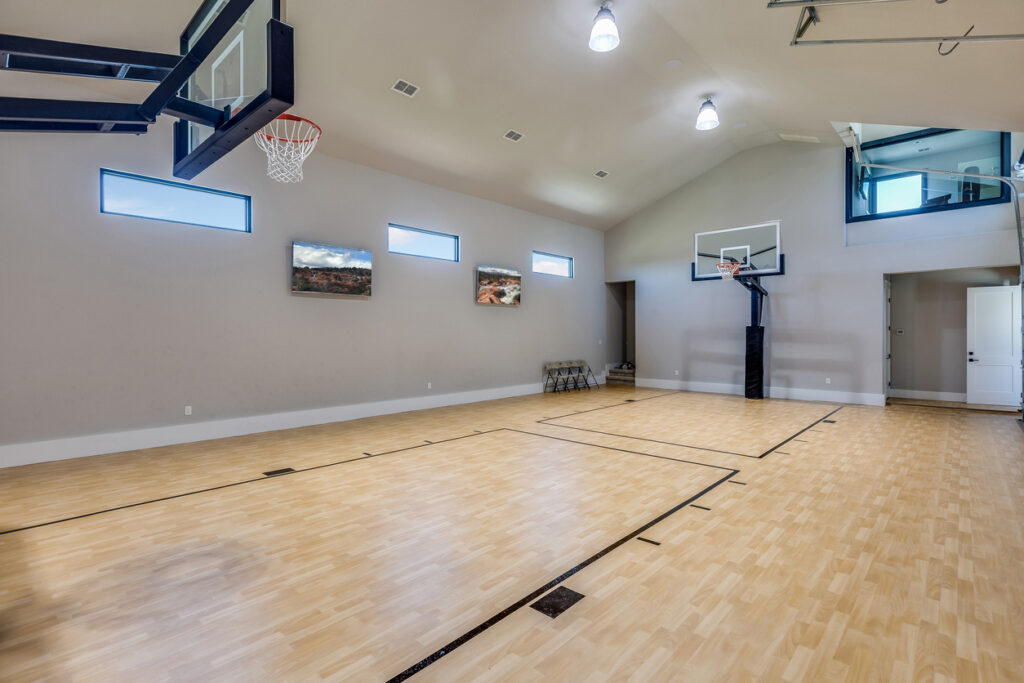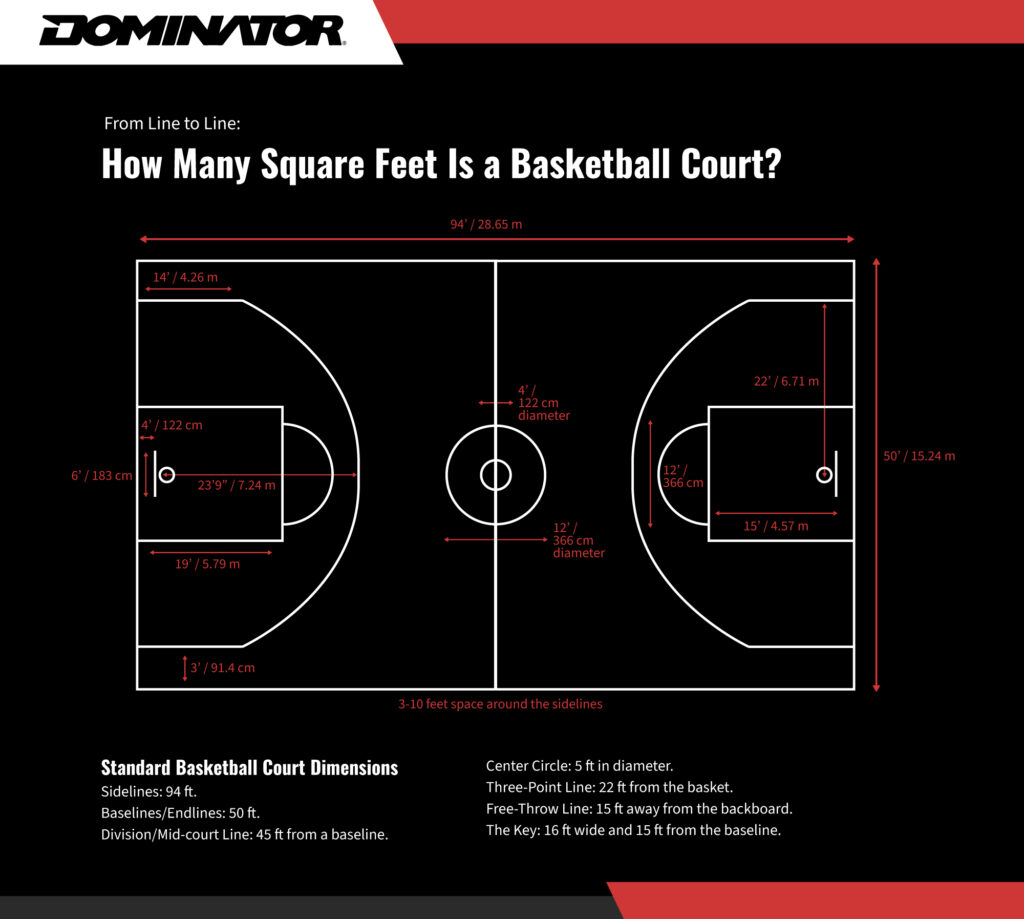Basketball
From Line to Line: How Many Square Feet Is a Basketball Court?

When basketball was invented in 1891, they used an indoor running track as an improvised court, but the sport has undoubtedly evolved since then. Today, basketball is so popular that people play it at all levels, with different court needs depending on whether you’re looking at a high school gymnasium or pro leagues.
So, how many square feet is a basketball court? You won’t make much progress building your own court without answering that question. Below, we’ll walk you through how to get the most accurate answer possible.
Standard Basketball Court Dimensions
As basketball grew to become an officially recognized sport, it needed more regulation beyond the 13 original rules it started with. Part of that included standardized measurements for professional courts to help ensure that every team had a consistent playing surface.
Today, NBA and collegiate-level basketball courts are 94 ft long by 50 ft wide or 4,700 square feet. Additionally, it’s common to include a 3- to 10-ft safety zone around the court for spectators, putting the actual size between 5,600 and 7,980 sq ft.
Most basketball courts are divided by regulation line markings. Each has a unique meaning to help direct the game during play, requiring particular measurements to make sure they fit within the space. Some of the most important markings include:
- Sidelines: Run along the length of the court, indicating its outer edge. Typically measures around 94 ft.
- Baselines/Endlines: Refer to the space behind the baskets indicating the ends of the court. Measures around 50 ft.
- Division/Mid-court Line: This line divides the court into two equal parts, marking the offensive playing area during the game. Typically placed 45 ft from a baseline.
- Center Circle: A circle situated on the division line that’s used to put the ball into play during tip-off. Measures 5 ft in diameter on a standard court.
- Three-Point Line: An arch that indicates the range from each hoop where scoring is worth three points. Measures about 22 ft from the basket.
- Free-Throw Line: A line 15 ft away from the backboard (18 ft 10 in from the baseline) that indicates where players stand when shooting free throws.
- The Key: A rectangular area that’s 16 ft wide and 15 ft from the baseline. It indicates the space where players stand for free throws.
These aren’t the only components making up a basketball court, but they’re often the most important when determining space requirements.

High School Basketball Court Dimensions
Standard basketball court dimensions make measurements easier to adjust for lower levels of competition. For example, a high school court is typically 84 ft long by 50 ft wide or 4200 sq ft. However, that increases to 5,100–6,800 sq ft when you include the 3–10 ft safety zone around the court.
Of course, the court’s lower square footage means that the dimensions of the line markings also change. Some of the new measurements include:
- Sidelines: 84 ft long
- Baselines/Endlines: 50 ft wide
- Three-Point Line: Placed 19 ft from the basket
- The Key: 12 ft wide and stretching 15 ft away from the backboard
Overall, high school courts are around 500 sq ft smaller than the pros use to accommodate the shorter stature of the players.
However, sizing a basketball court becomes more complex at the elementary level. At that point, dimensions aren’t determined solely by grade but by the typical age of the players. For example, tweens usually play on half-courts (37 ft long by 42 ft wide), which are further split by a divider.
The reduced size helps elementary schools maximize space within the gymnasium with the ability to separate the court—meaning two games can be played at once.
Backyard and Recreational Basketball Court Dimensions
Building your own basketball court means the buck stops with you for size considerations. While some backyards can accommodate a standard court, many people opt for smaller sizes since they’re not hosting official games.
A small court’s dimensions might measure 30 ft long by 30 ft wide or 900 sq ft. Its compact area makes it perfect for 2 v 2 games or HORSE while also giving it a reduced price tag. The average price of building a full-size court is $17,200 to $76,000. In contrast, a small court costs between $3,300 and $15,000.
Find an InstallerCalculating a Court’s Square Footage
The standard dimensions of a basketball court are useful to remember when you’re building your own. But if you want it to fit your available space as precisely as possible, it’s good to know how to calculate square footage yourself. Luckily, the process is fairly simple.
First, measure the longest side of a space to find its length, then measure the shortest side to find the width. After you have both values, put them into the formula below to find the square feet:
Length x Width = Area (in square feet)
For example, courts built for a collegiate or NBA level of competition are 94 ft long and 50 ft wide. Input them into the formula (94 x 50), and you get the standard basketball court square footage of 4,700.
Tailor the Size of Your Basketball Space
So, how big is a basketball court? It’s a question with many answers—and the only “right” one is whatever fits your needs. Adjusting the dimensions to fit your space helps you feel comfortable during a game so you can play at your best. That’s why you should browse Dominator’s selection of top-notch basketball hoops and make the court that’s right for you today!



















